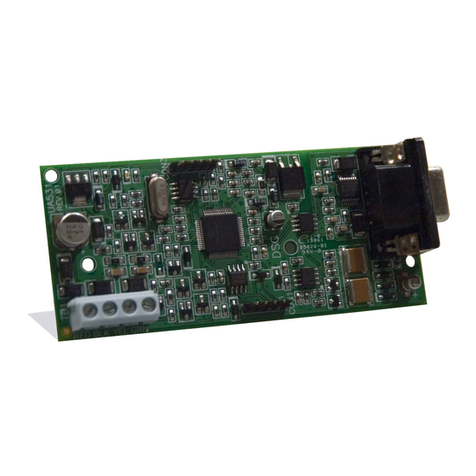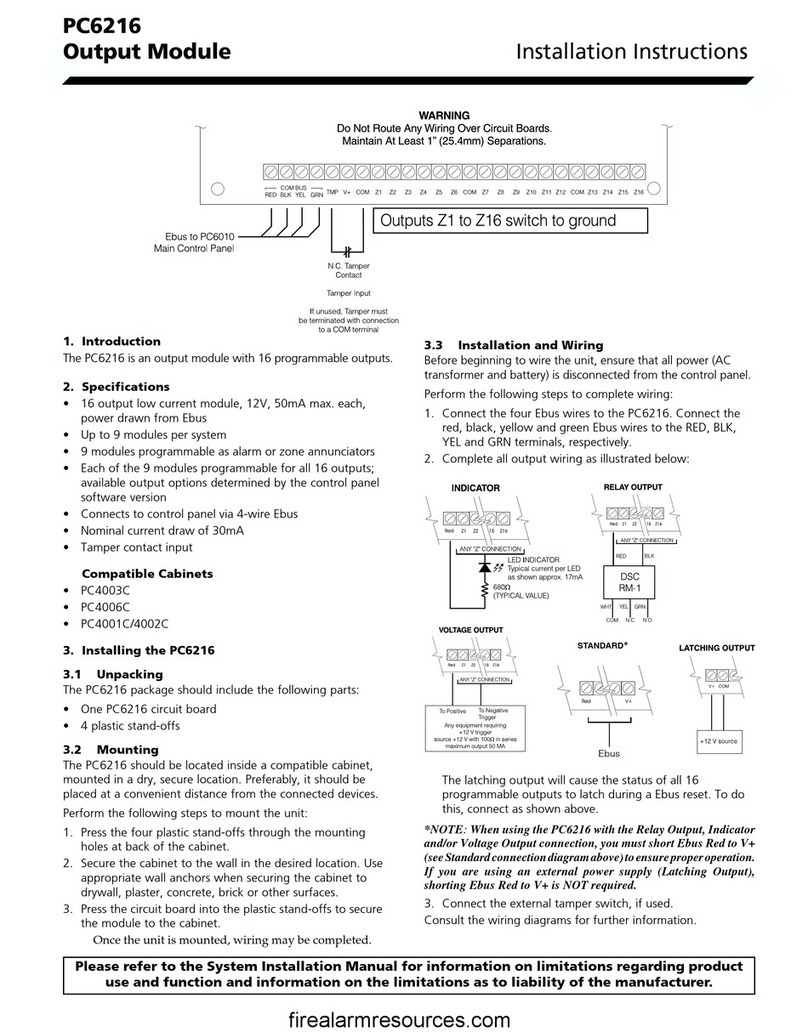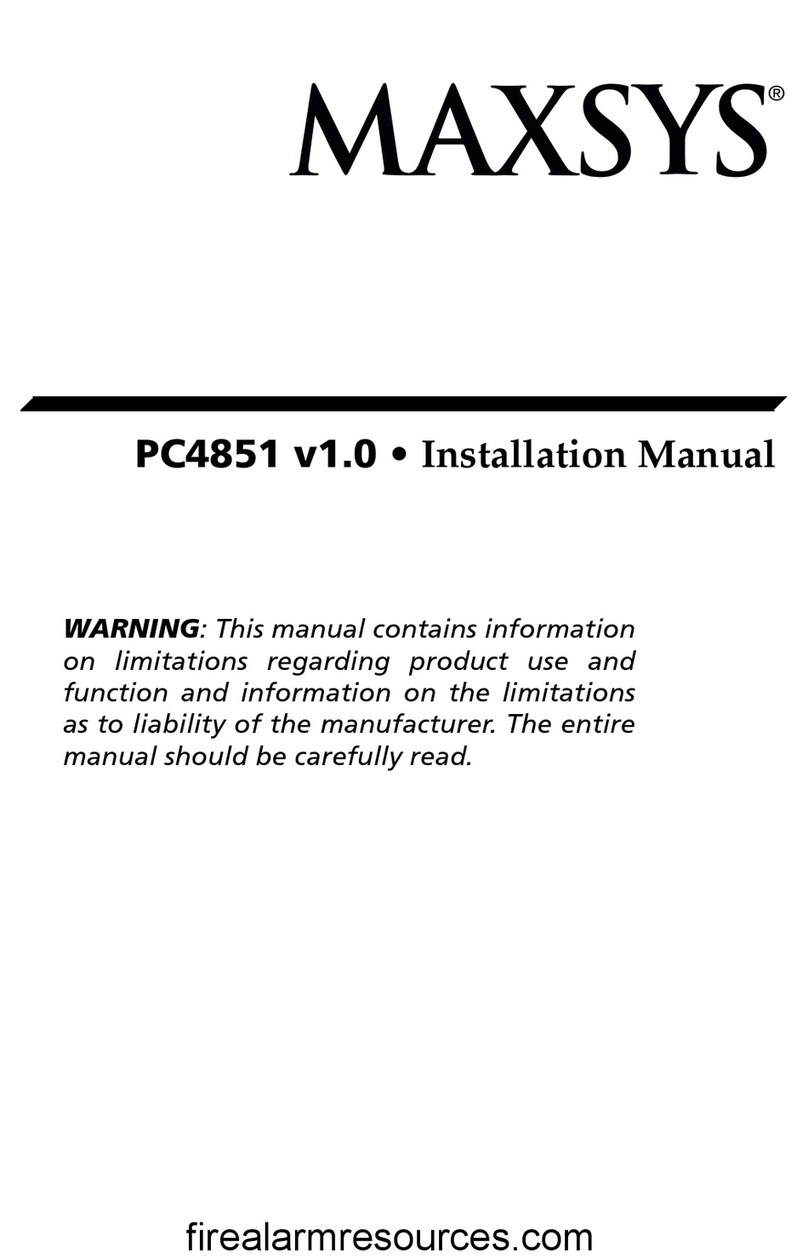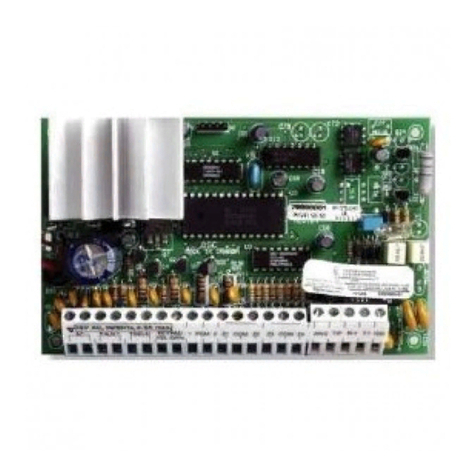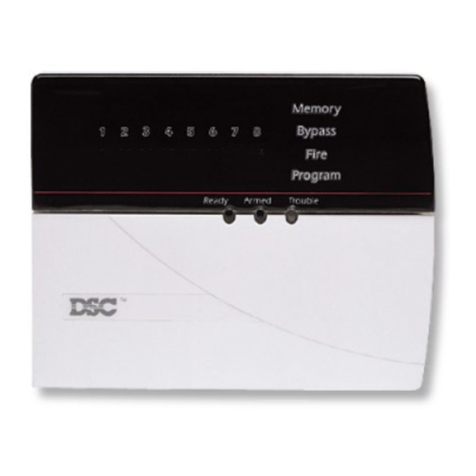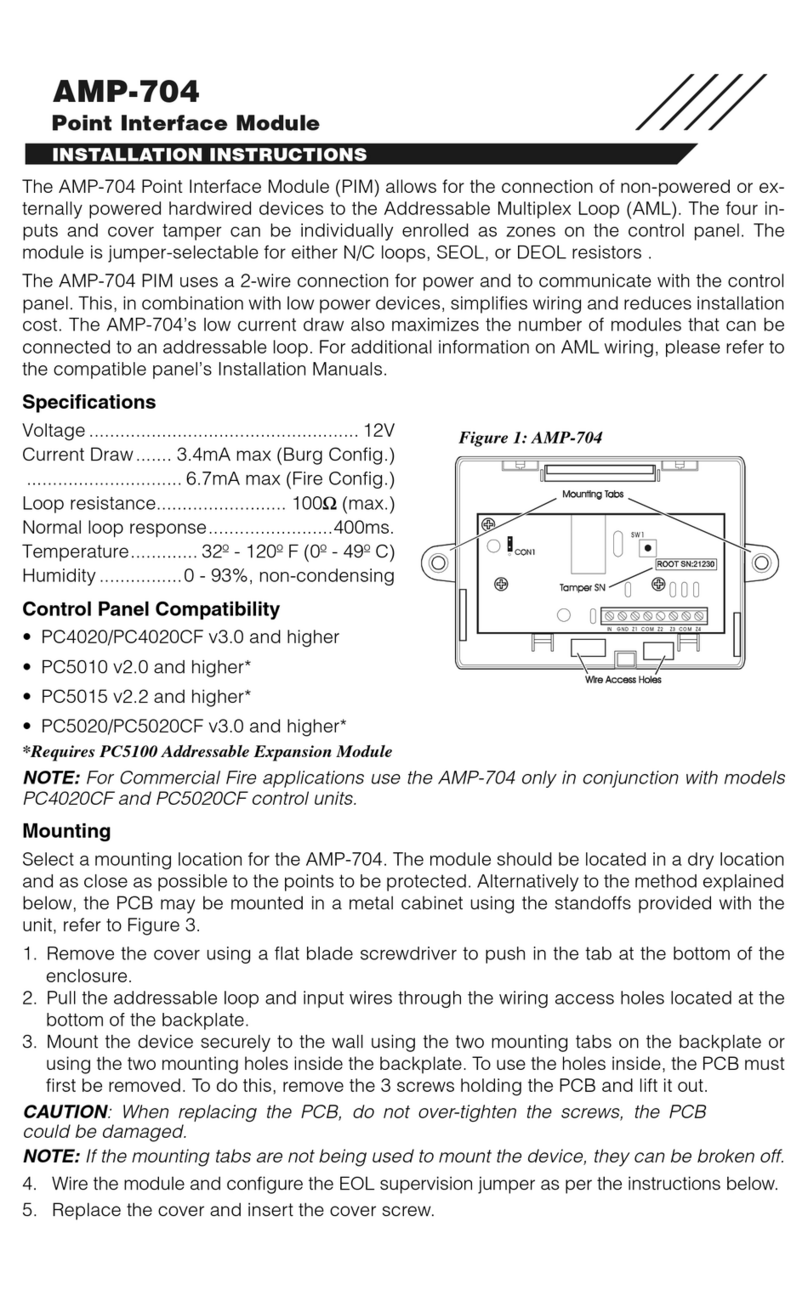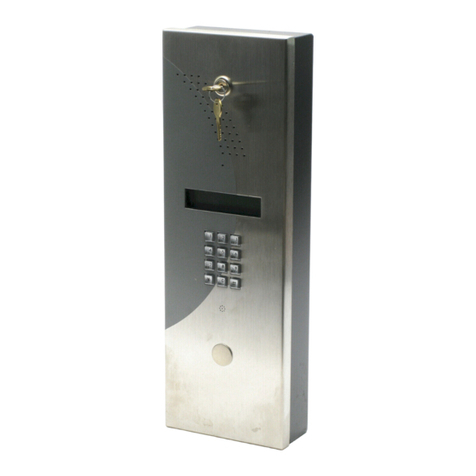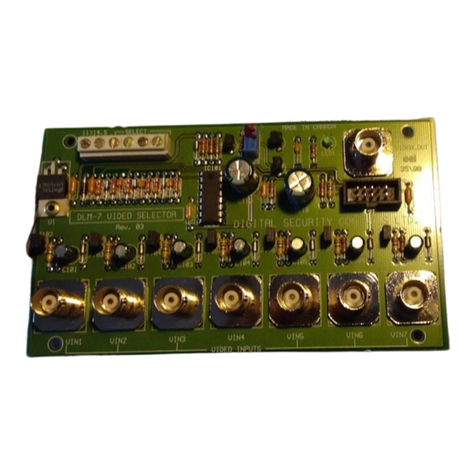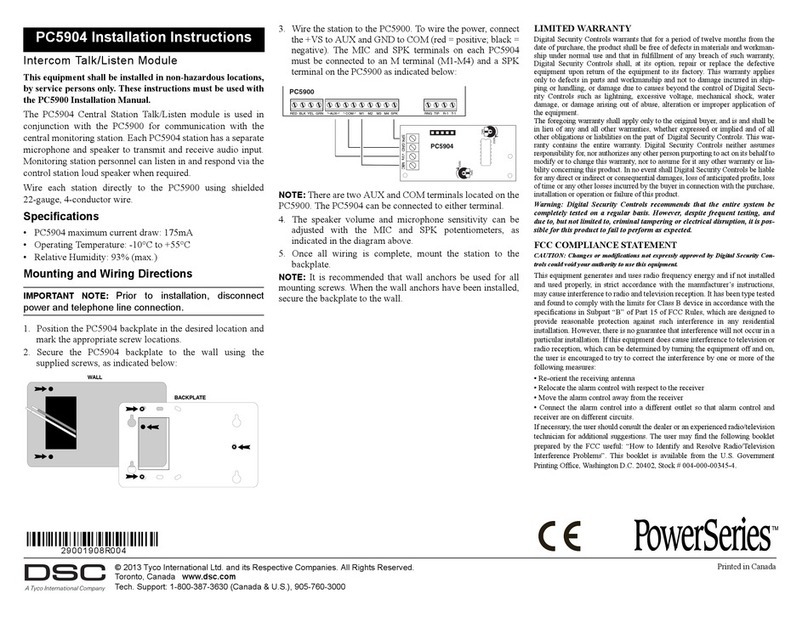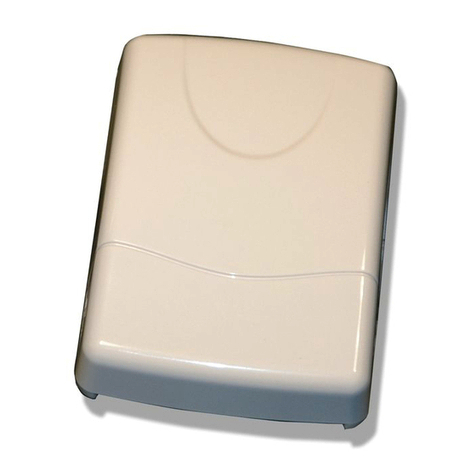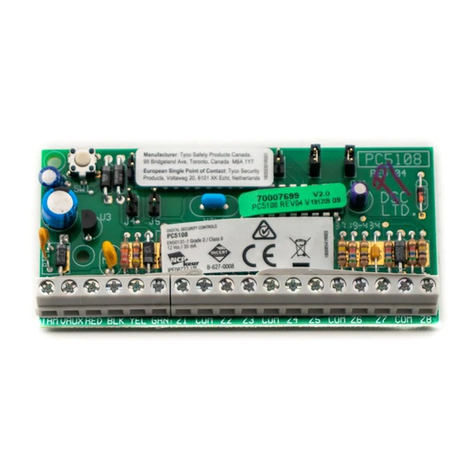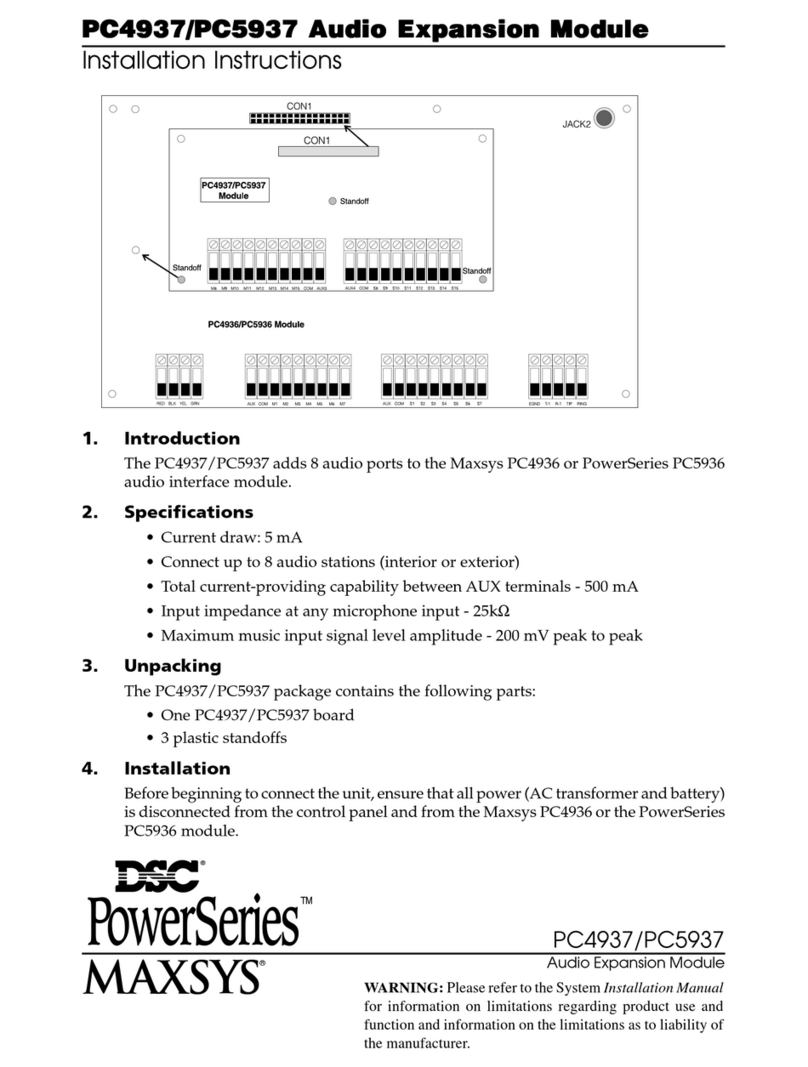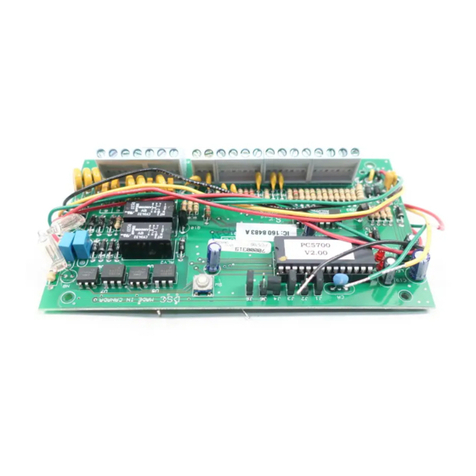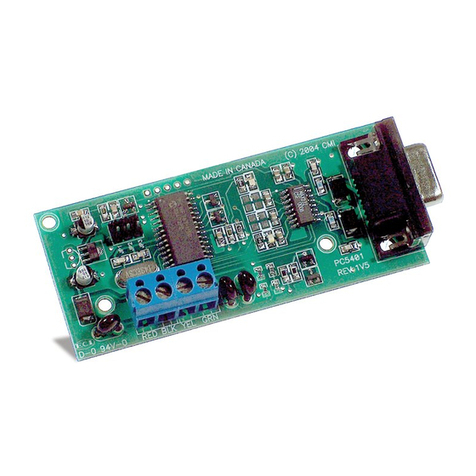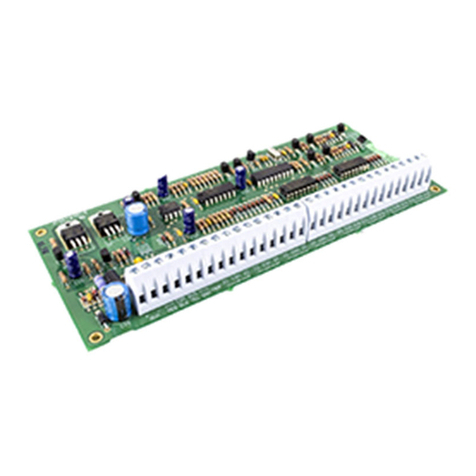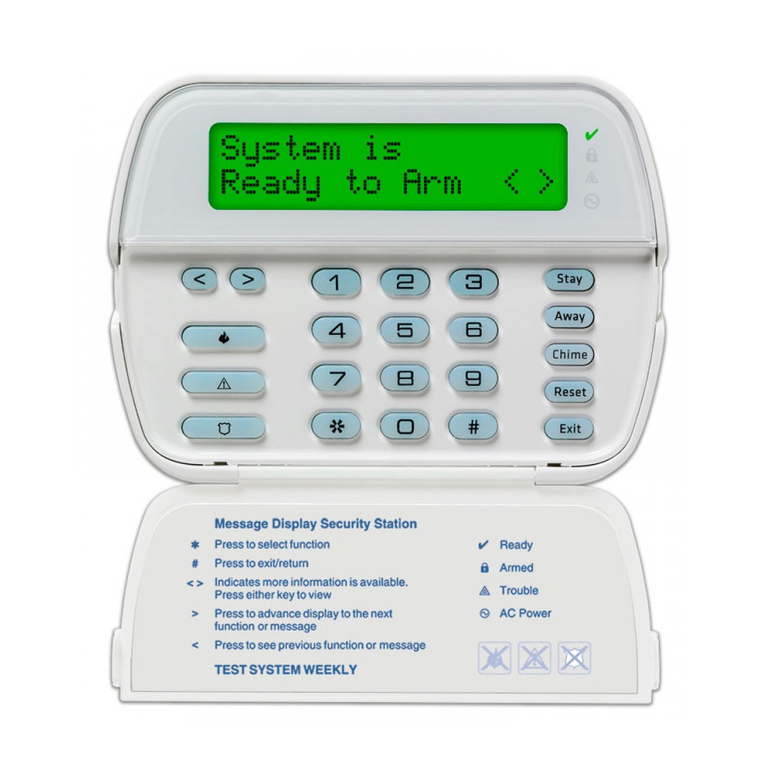
PowerSeries Neo Installation Guide
Safety Instructions for Service Personnel
Warning: When using equipment connected to the telephone network, always follow the
basic safety instructions provided with this product. Save these instructions for future
reference. Inform the end-user of the safety precautions that must be observed when
operating this equipment.
Before Installing The Equipment
Ensure your package includes the following items:
lInstallation and User manuals, including the SAFETY INSTRUCTIONS.
READ and SAVE these instructions!
Follow all WARNINGS AND INSTRUCTIONS specified within this
document and/or on the equipment.
lHS2016/HS2016/2032/2064/2128 alarm controller
lPower Supply, direct plug-in
lMounting hardware
Selecting A Suitable Location For The Alarm Controller
Use the following list as a guide to find a suitable location to install this equipment:
lLocate near a telephone socket and power outlet.
lSelect a location free from vibration and shock.
lPlace alarm controller on a flat, stable surface and follow the installation
instructions.
Do NOT locate this product where people may walk on the secondary circuit
cable(s).
Do NOT connect alarm controller to electrical the same circuit as large
appliances.
Do NOT select a location that exposes your alarm controller to direct
sunlight, excessive heat, moisture, vapors, chemicals or dust.
Do NOT install this equipment near water. (e.g., bath tub, kitchen/laundry
sink, wet basement, near a swimming pool).
Do NOT install this equipment and accessories in areas where risk of
explosion exists.
Do NOT connect this equipment to electrical outlets controlled by wall
switches or automatic timers.
AVOID interference sources.
AVOID installing equipment near heaters, air conditioners, ventilators, and
refrigerators.
AVOID locating equipment close to or on top of large metal objects (e.g., wall
studs).
See "Locating Detectors and Escape Plan" on page 20 for information on locating smoke
and CO detectors.
SAFETY Precautions Required During Installation
lNEVER install this equipment and/or telephone wiring during a lightning
storm.
lNEVER touch uninsulated telephone wires or terminals unless the telephone
line has been disconnected at the network interface.
lPosition cables so that accidents can not occur. Connected cables must NOT
be subject to excessive mechanical strain.
lUse only the power supply provided with this equipment. Use of unau-
thorized power supplies may cause damage.
lFor direct plug-in versions, use the transformer supplied with the device.
WARNING: THIS EQUIPMENT HAS NO MAINS ON/OFF SWITCH. THE PLUG OF
THE DIRECT PLUG-IN POWER SUPPLY IS INTENDED TO SERVE AS THE
DISCONNECTING DEVICE IF THE EQUIPMENT MUST BE QUICKLY
DISCONNECTED. IT IS IMPERATIVE THAT ACCESS TO THE MAINS PLUG AND
ASSOCIATED MAINS SOCKET/OUTLET IS NEVER OBSTRUCTED.
IMPORTANT NOTE FORNORTHAMERICA!
This alarm system must be installed and used within an environment that provides the
pollution degree max 2 and over-voltages category II NON-HAZARDOUS
LOCATIONS, indoor only. The equipment is DIRECT PLUG-IN (external transformer)
and is designed to be installed, serviced and/or repaired by service persons only;
[service person is defined as a person having the appropriate technical training and
experience necessary to be aware of hazards to which that person may be exposed in
performing a task and of measures to minimize the risks to that person or other persons].
This equipment has no mains on/off switch; if the equipment must be quickly
disconnected, the plug of the direct plug-in power supply is intended to serve as the
disconnecting device; it is imperative that access to the mains plug and associated mains
socket/outlet, is never obstructed. There are no parts replaceable by the end-user within
this equipment. The wiring (cables) used for installation of the alarm system and
accessories, shall be insulated with PVC, TFE, PTFE, FEP, Neoprene or Polyamide.
(a) The equipment enclosure must be secured to the building structure before operation.
(b) Internal wiring must be routed in a manner that prevents:
- Excessive strain or loosening of wire on terminal connections;
- Damage of conductor insulation
(c) Disposal of used batteries must be made in accordance with local waste recovery and
recycling regulations.
(d) Before servicing, DISCONNECT the power and telephone connection.
(e) DO NOT route any wiring over circuit boards.
(f) The installer is responsible to ensure that a readily accessible disconnect device is
incorporated in the building for permanently connected installations.
The power supply must be Class II, FAIL SAFE with double or reinforced insulation
between the PRIMARY and SECONDARY CIRCUIT/ENCLOSURE and be an approved
type acceptable to the local authorities. All national wiring rules must be observed.
Installation
Mounting the Enclosure
Locate the panel in a dry area, preferably near an unswitched AC power
source and the incoming telephone line. Complete all wiring before
applying AC or connecting the battery.
Terminal Descriptions
The following terminals are available on the PowerSeries Neo alarm
controller.
Terminal Description
BAT+,
BAT-
Battery terminals. Use to provide backup power and additional current
when system demands exceed the power output of the transformer, such
as when the system is in alarm.
Do not connect the battery until all other wiring is complete.
AC Power terminals.
Connect the battery before connecting the AC. Do not connect the battery
or transformer until all other wiring is complete.
AUX+,
AUX-
Auxiliary terminals. Use to power modules, detectors, relays, LEDs, etc.
(700mA MAX). Connect the positive side of device to AUX+, the
negative side to AUX-.
BELL+,
BELL-
Bell/Siren power (700mA MAX). Connect the positive side of any alarm
warning device to BELL+, the negative side to BELL-.
RED, BLK,
YEL, GRN
Corbus terminals. Use to provide communication between the alarm
controller and connected modules. Each module has four Corbus
terminals that must be connected to the Corbus.
PGM1 to
PGM4
Programmable output terminals. Use to activate devices such as LEDs.
(PGM1, PGM3, and PGM4: 50mA PGM2: 300mA or can be configured
as an input)
Z1 to Z8
COM
Zone input terminals. Ideally, each zone should have one detection
device; however, multiple detection devices can be wired to the same
zone.
EGND Earth ground connection.
TIP, RING,
T-1, R-1
Telephone line terminals.
PCLINK_1 DLS/SA
PCLINK_2 DLS/SA, Alternate Communicator
Corbus Wiring
The RED and BLK Corbus terminals are used to provide power while
YEL and GRN are used for data communications. The 4 Corbus terminals
of the alarm controller must be connected to the 4 Corbus terminals or
wires of each module.
The following conditions apply:
lCorbus should be run with minimum 22 gauge quad, two pair
twisted preferred.
lThe modules can be home run to the panel, connected in series or
- 2 -
